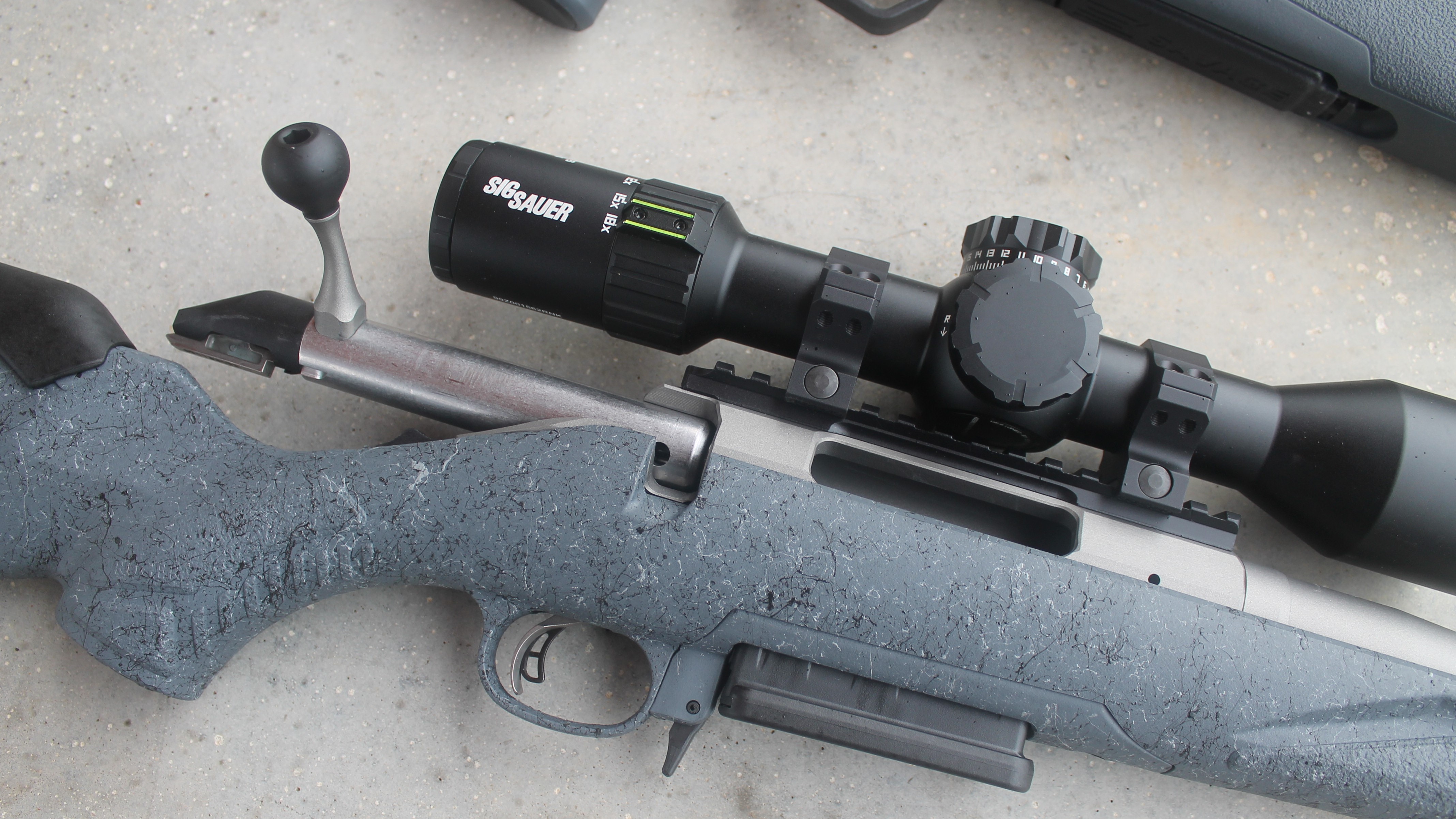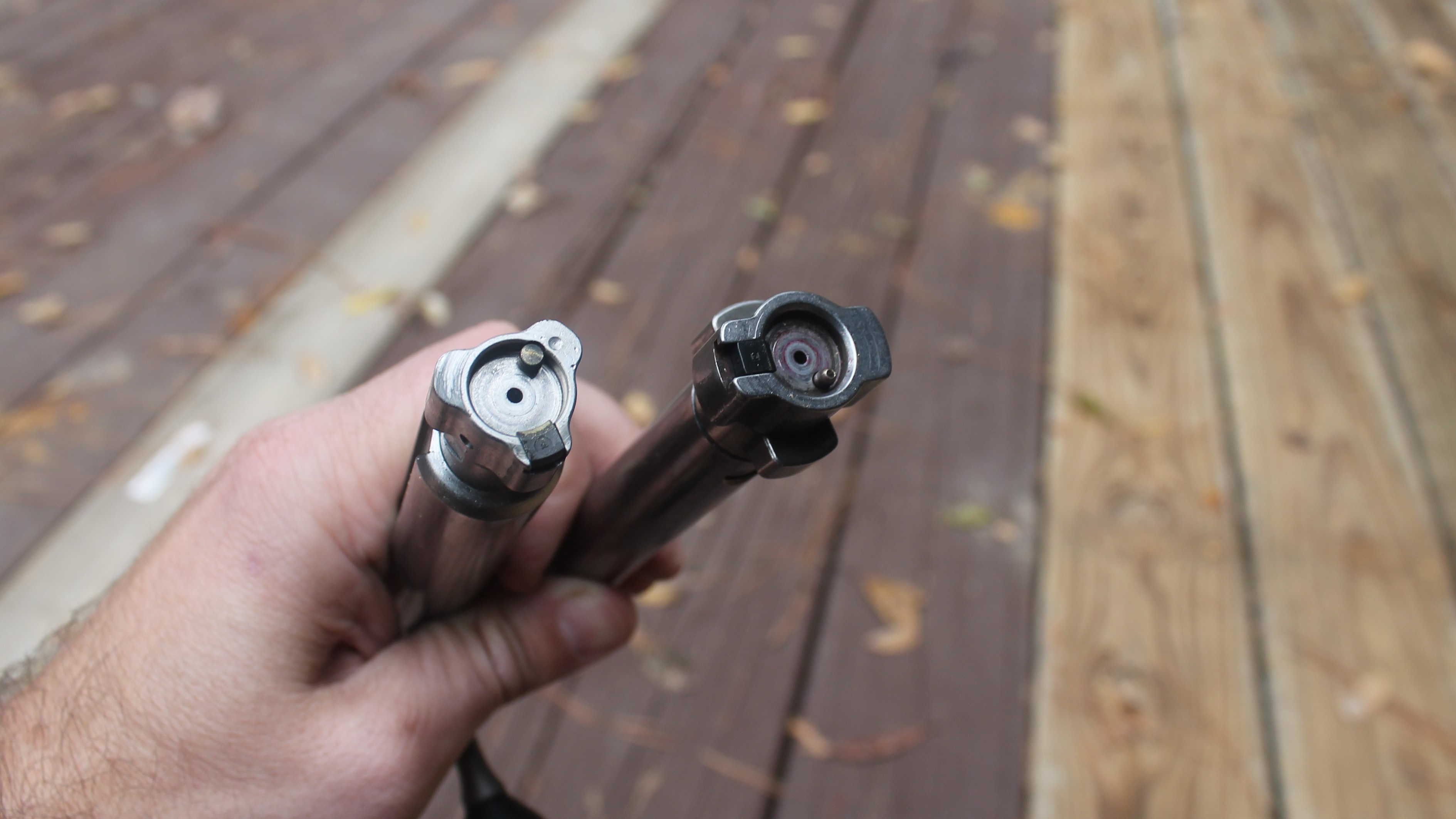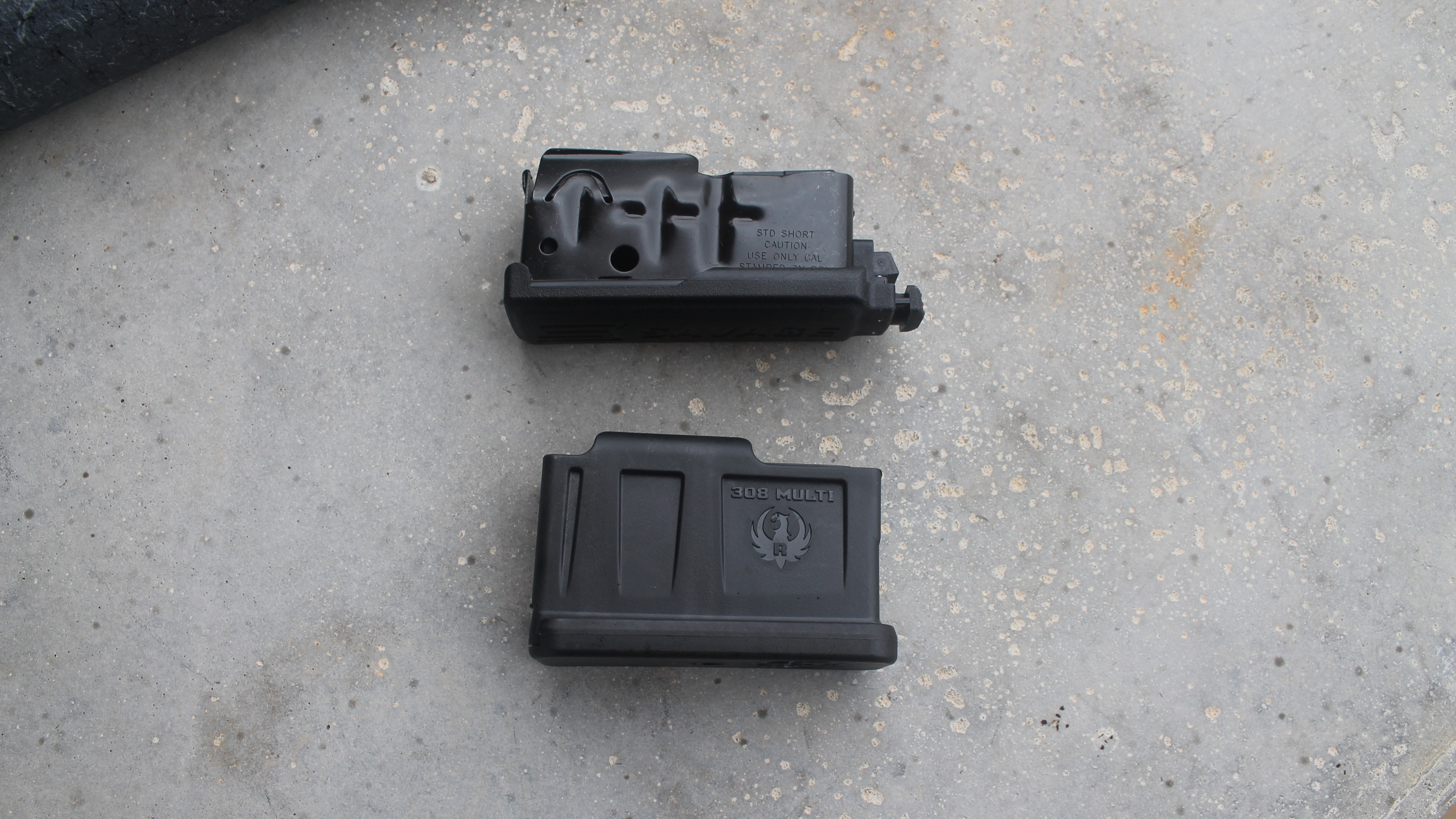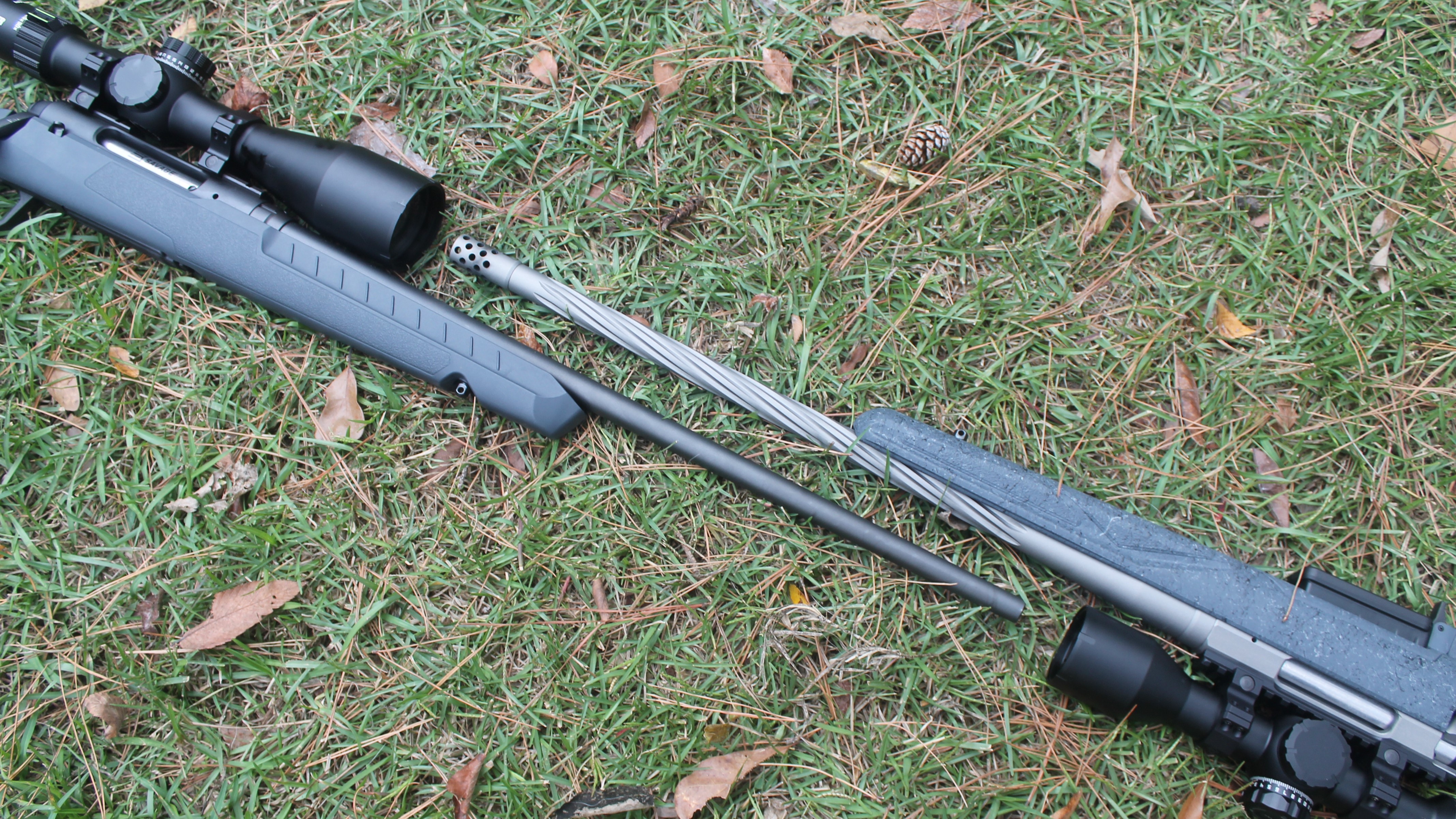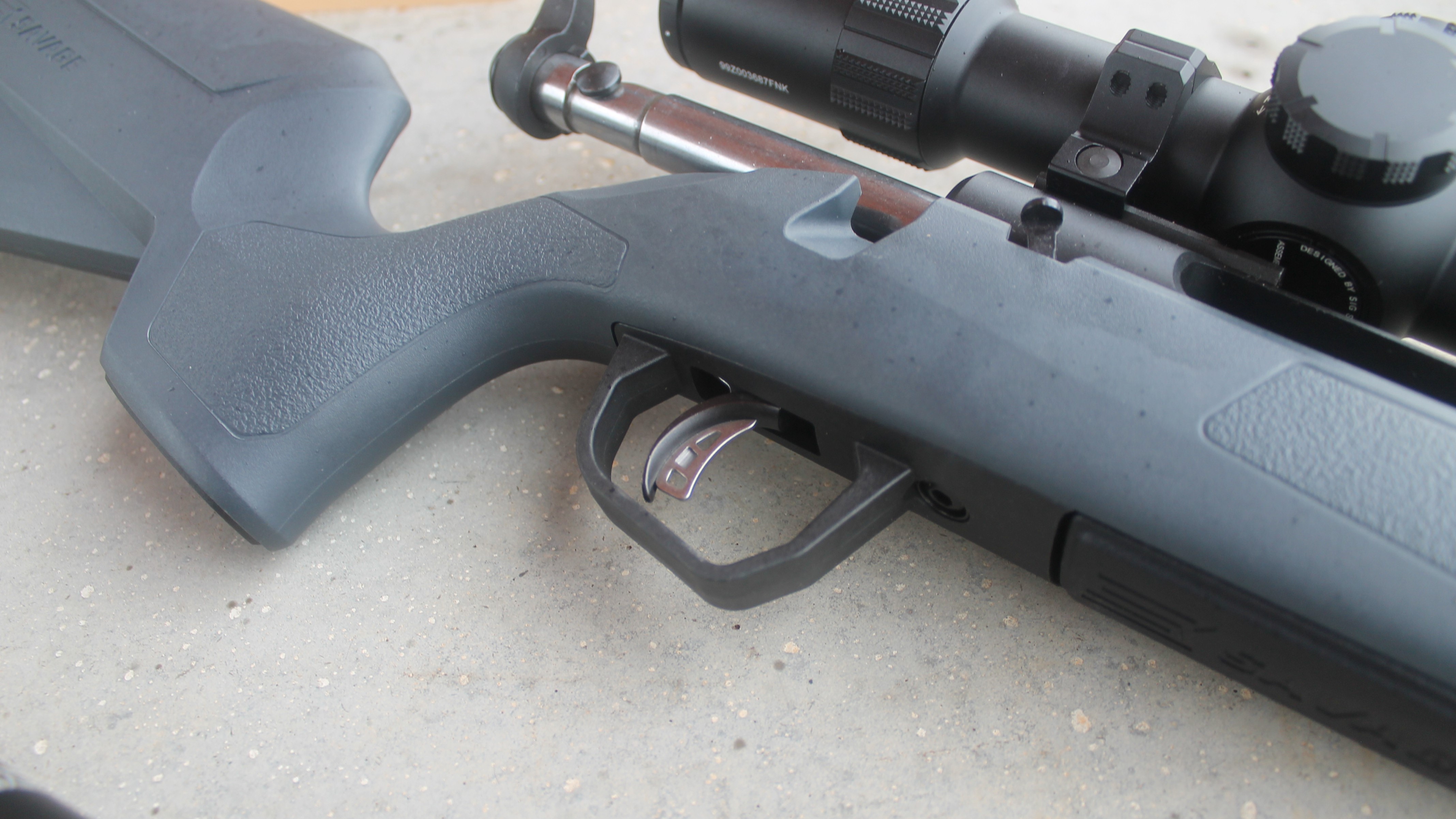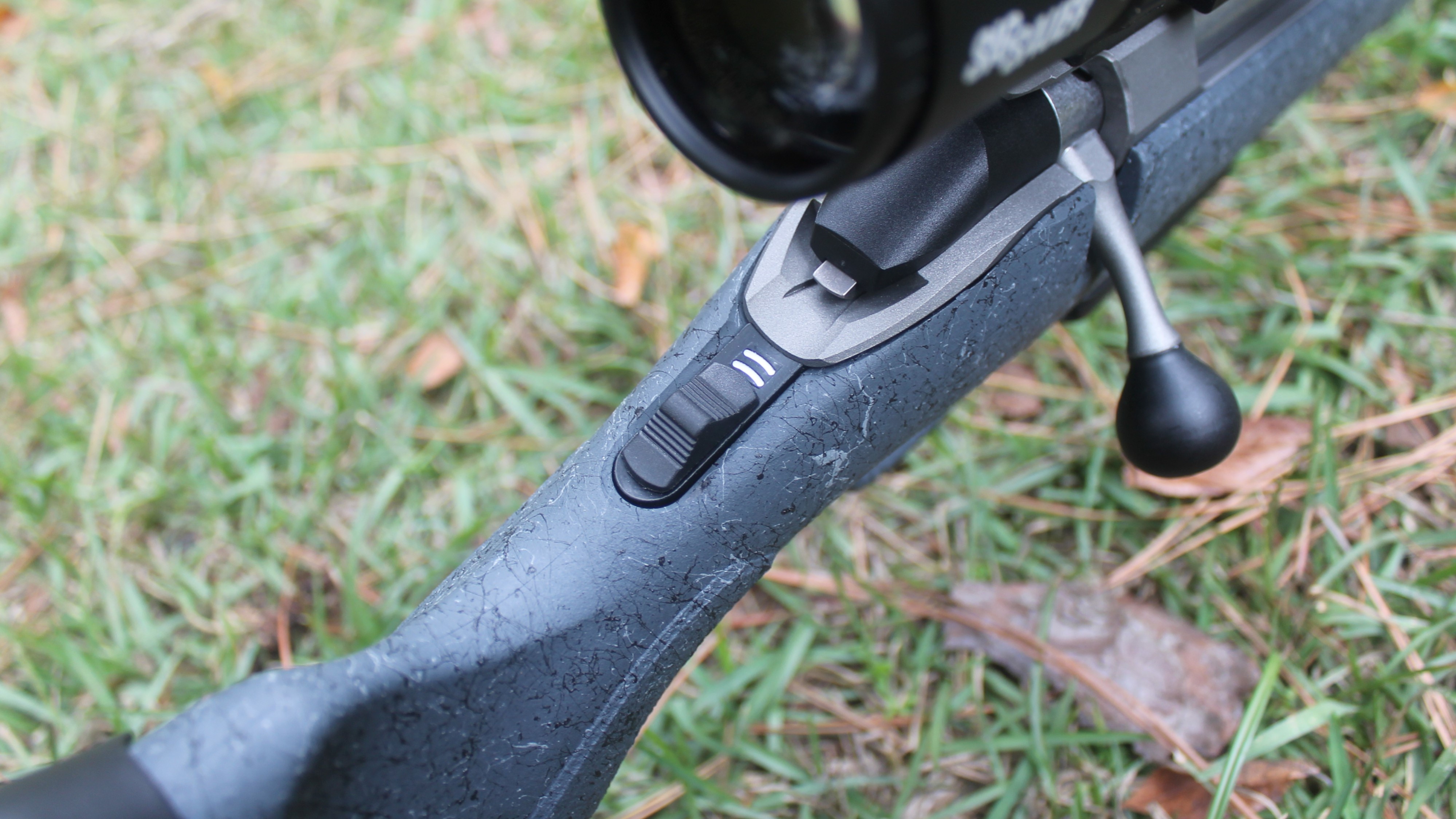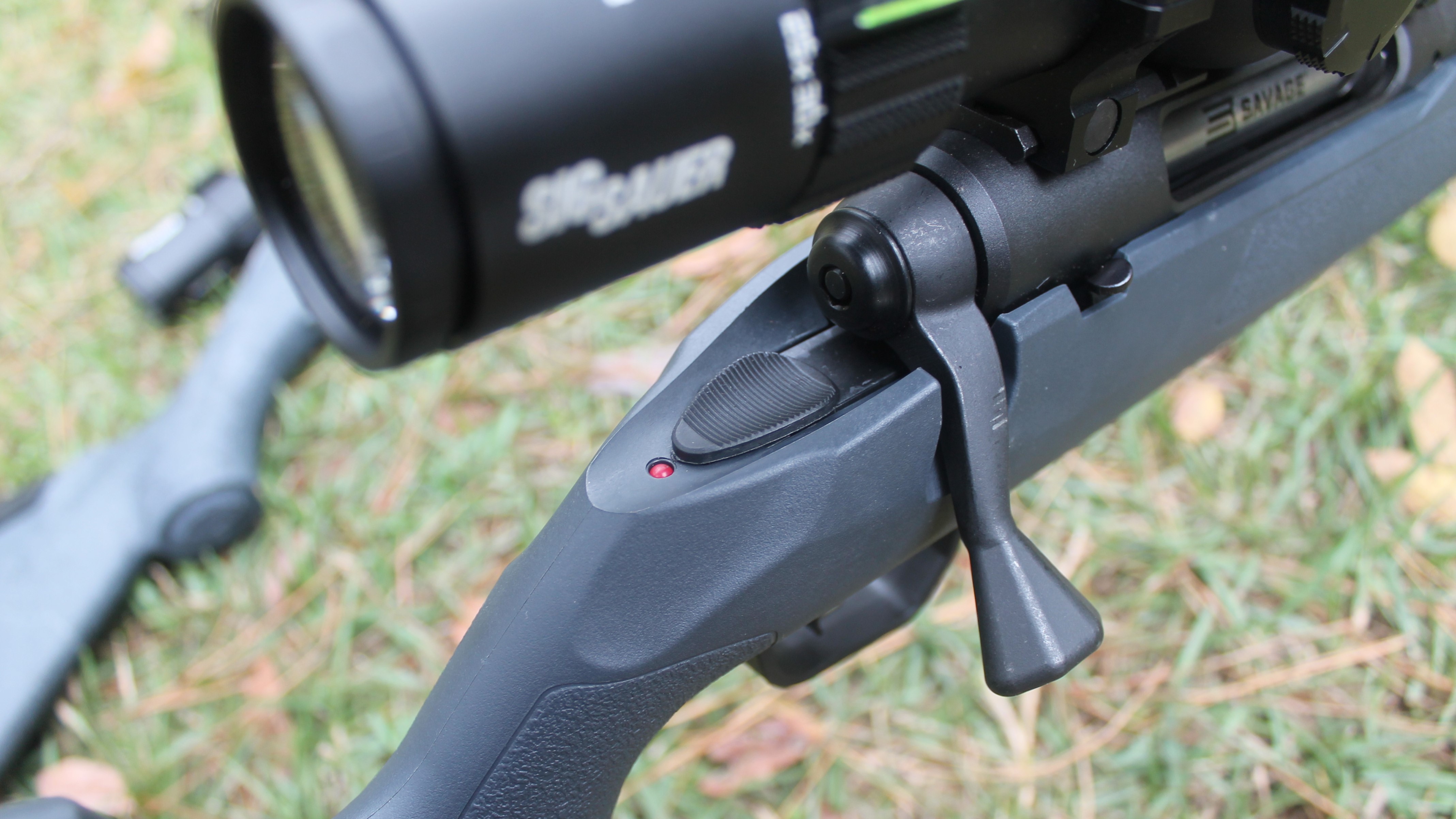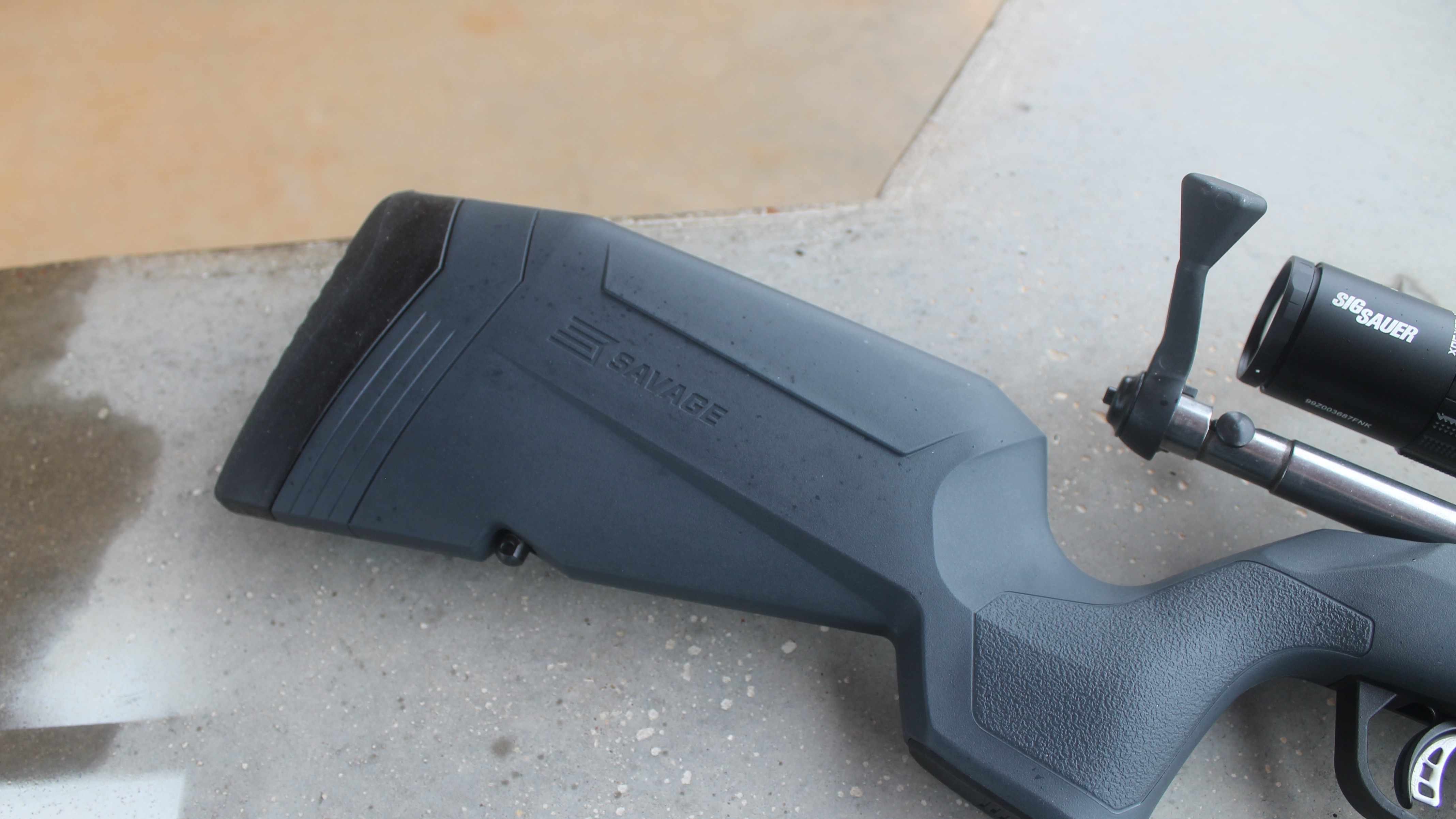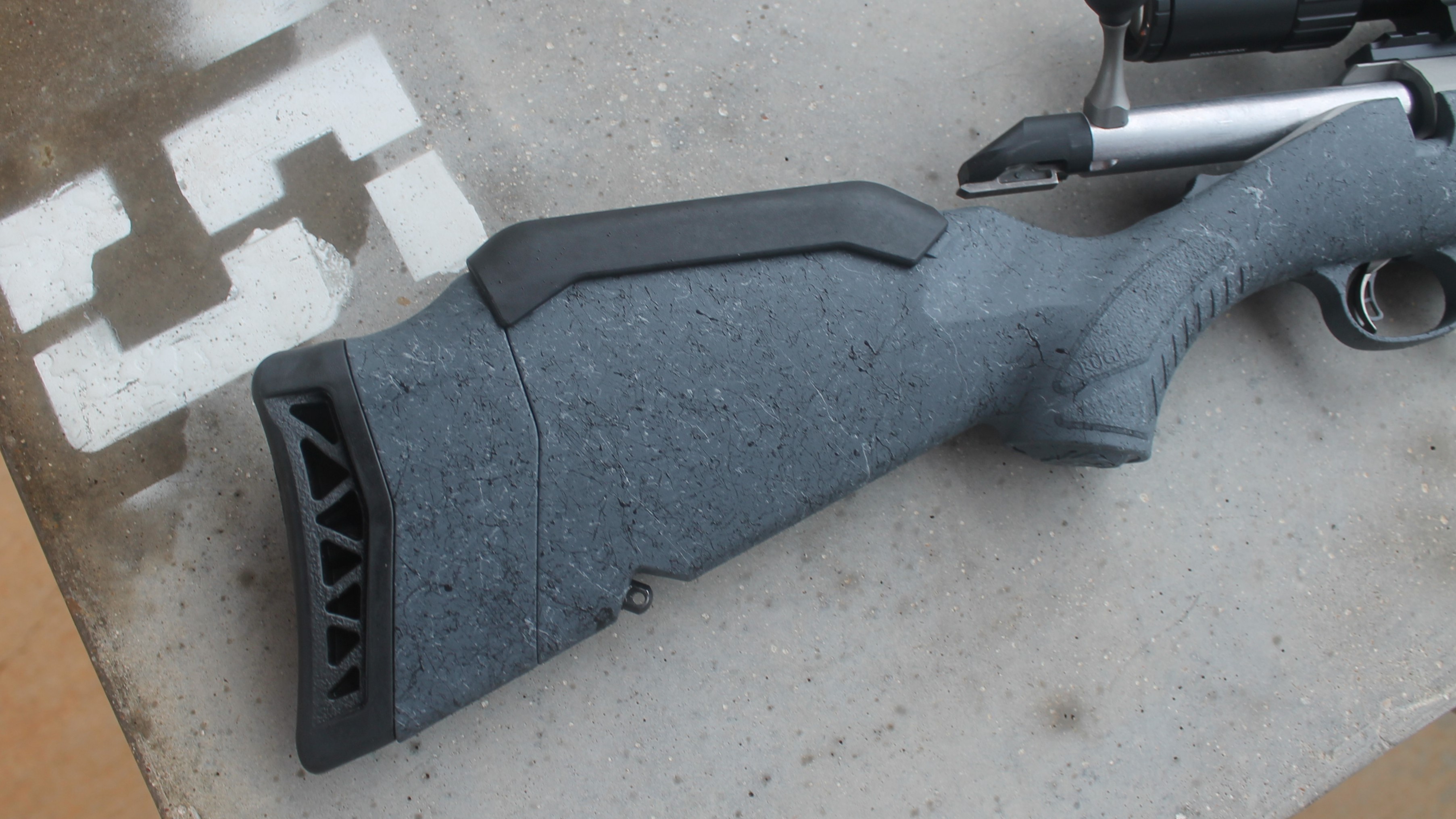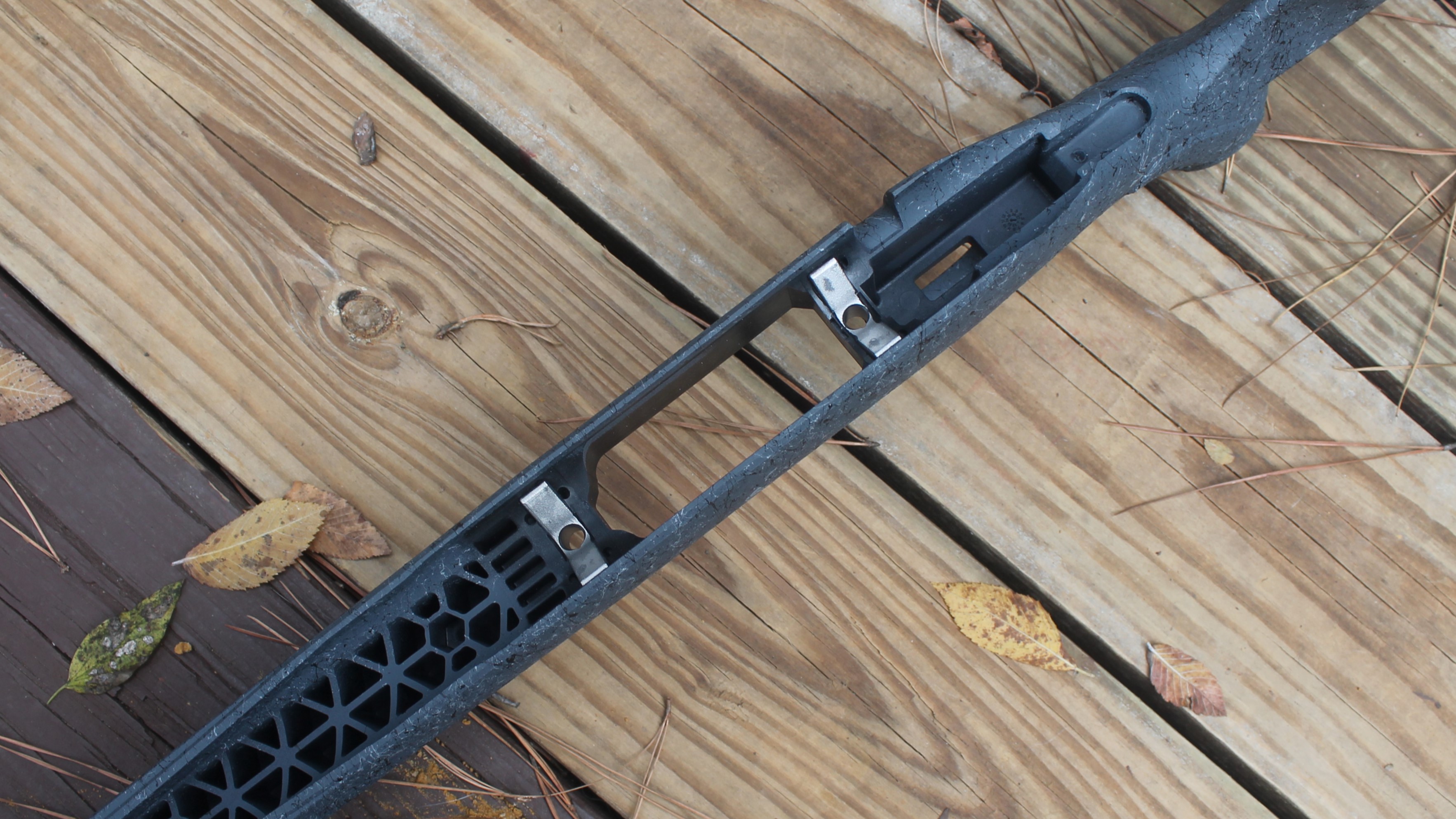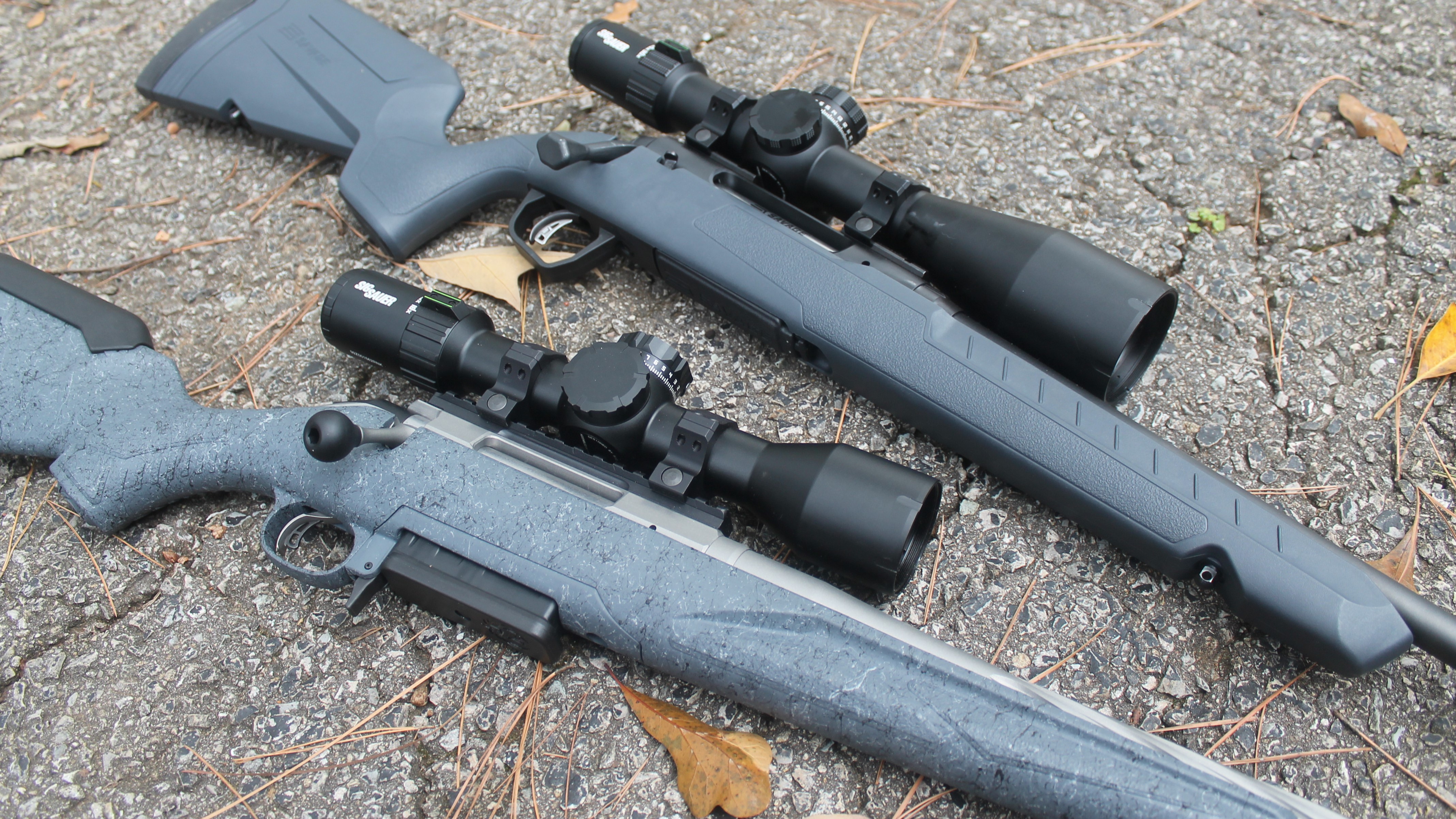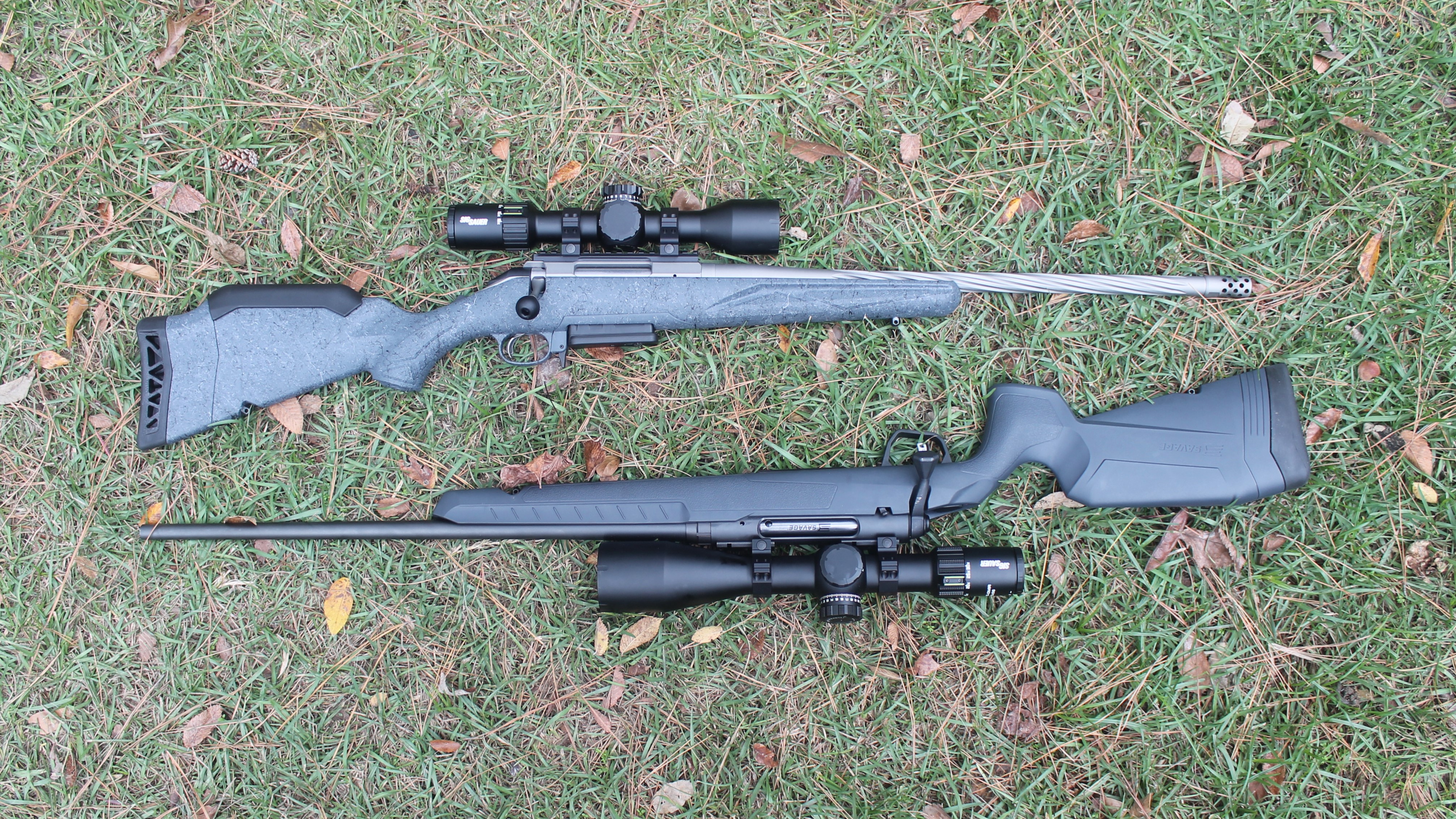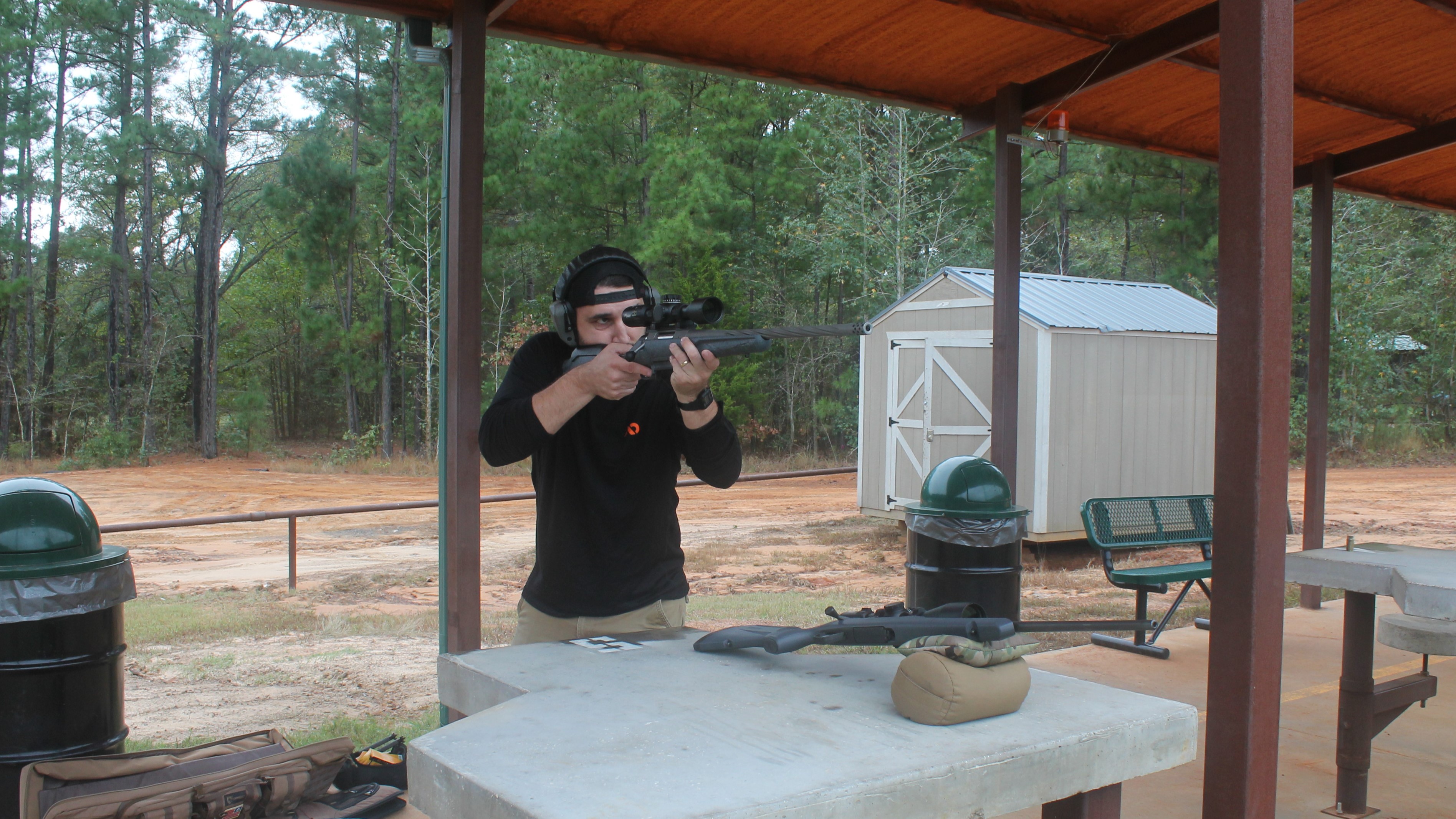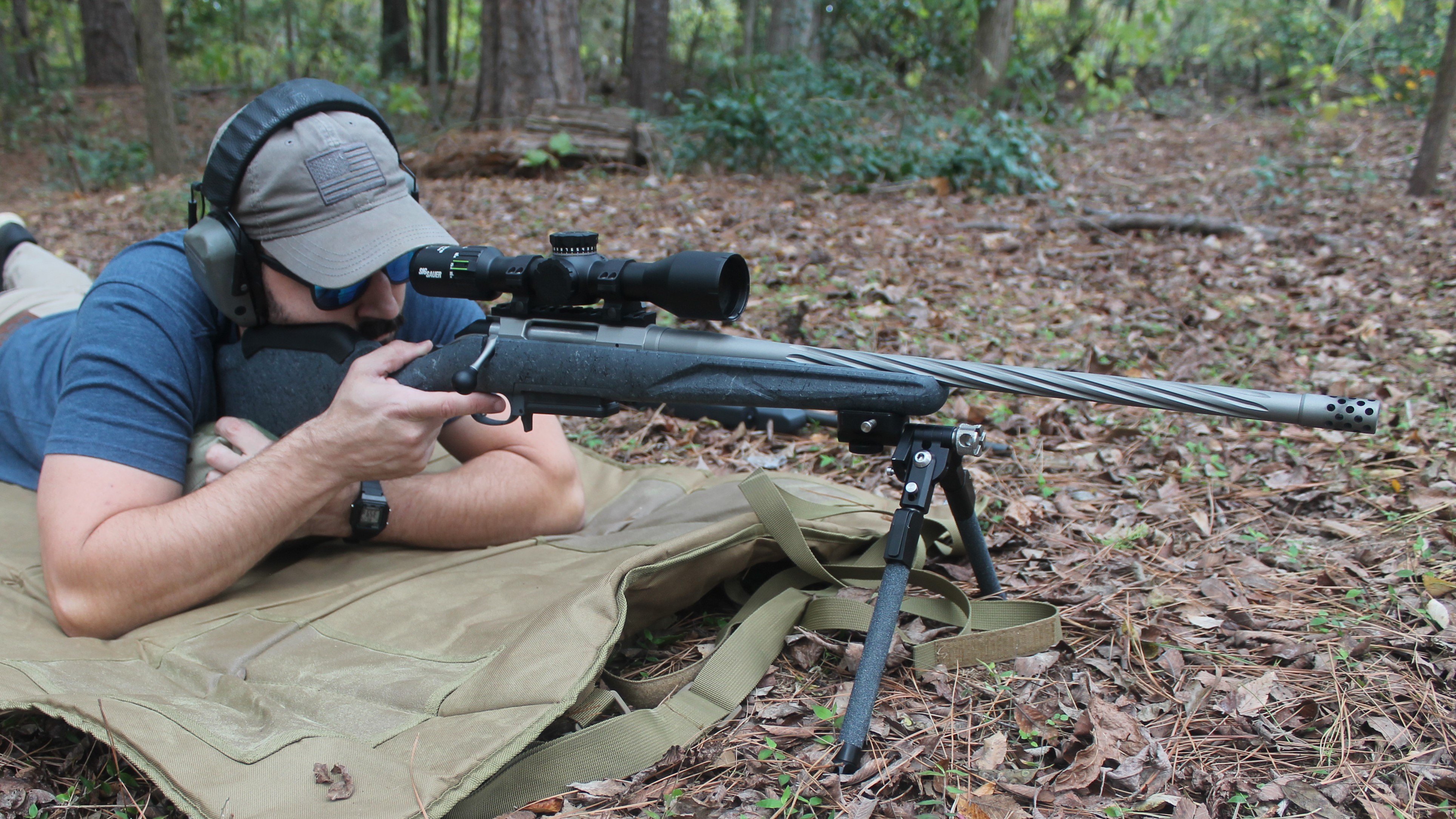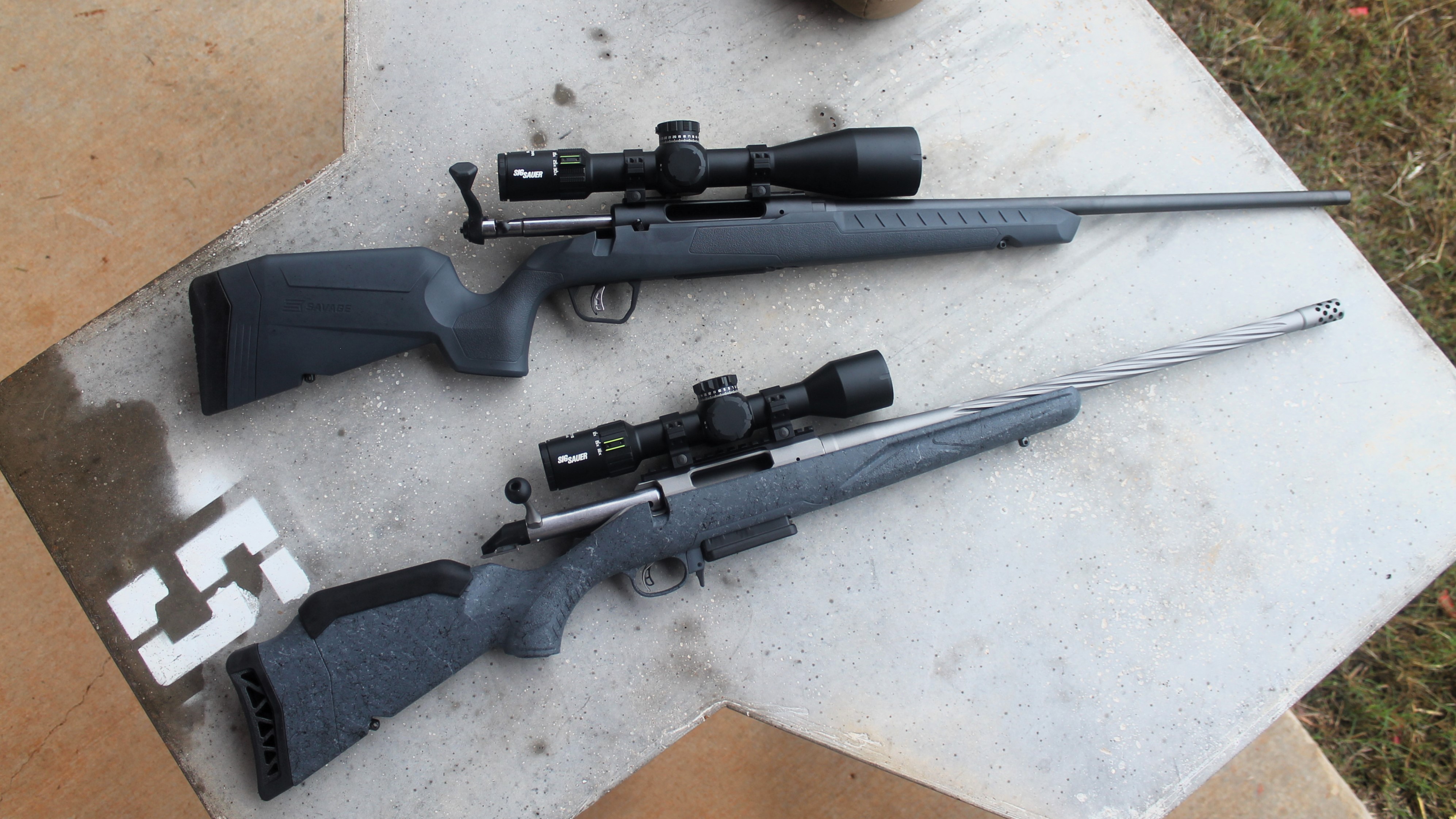Christmas is right around that corner, and hunters young and old will be hoping to spy a long, narrow box tucked under the tree. I saw such a box a few years ago. It turned out to be floor mats for my minivan, but I’m not a man without means, so I went ahead and bought myself my own Christmas present, thankyouverymuch.
I picked up a Ruger American bolt-action rifle for less than $300, and I wasn’t alone. Ruger’s line of American rifles has been among the most popular budget-friendly rifles of the last decade, and thousands of youngsters will wake up on December 25th to unwrap the updated American Generation II.
Either that, or they might find themselves with another wildly popular budget rifle, a Savage Axis. The Axis was also the beneficiary of a facelift in recent years, and the company claims the Axis 2 is all-new, redesigned, and ready for the field.
Both the American Gen II and the Axis 2 have a well-deserved reputation for solid performance at an extremely affordable price. But if you’re a budget-conscious hunter looking for a new rifle, or the parent of a young hunter who may or may not take to the field, which one should you choose? Keep reading, and you can decide for yourself.

Ruger American Gen II Standard, 6.5 Creedmoor
-
Barrel Contour: Medium
-
Barrel Fluting: Spiral
-
Barrel Length: 20″
-
Barrel Threaded: Yes
-
Thread Pattern: 5/8″-24
-
Twist: 1:8″ RH
-
Capacity: 3
-
Magazine Type: AI-Style
-
Sights: None-Picatinny Scope Base
-
Weight: 6.5 lb.
-
Overall Length: 41.25″
-
Length of Pull: 12″ – 13.75″
-
Trigger: Marksman
-
Trigger Adjustable: Yes
-
Trigger Pull Force: 3-5 lbs
Savage Axis 2, 6.5 Creedmoor
-
Barrel Contour: Sporter
-
Barrel Length: 22″
-
Barrel Threaded: No
-
Rate of Twist: 1:8″ RH
-
Magazine Capacity: 4
-
Feed Type: Detachable Box Magazine
-
Scope Bases: 2 Piece, Weaver Style
-
Weight: 6.6 lbs
-
Overall Length: 42.5″
-
Stock Pull Length: 13.75″ (34.93 cm)
-
AccuTrigger: Yes
-
Trigger Adjustable: Yes
-
Trigger Pull Force: 2.5-6 lbs
The Ruger American Gen II is more expensive (more on that below), and you’ll see from the spec sheet that it has more to offer. Whether that extra cost is worth it, however, is a different story. Both rifles are in the $400 to $600 range, and both the American and Axis lines have been billed as budget-friendly. For that reason, I think the matchup isn’t too apples-to-oranges.
As with Caliber Battles, I’ll cover a variety of categories that make a good hunting rifle and choose a winner in each. The rifle with the most wins will be declared the overall winner, though as with all things gun-related, the best rifle for you depends on more than what gun nerds say on the Internet. Ultimately, I want to give you as much information as possible and let you make your own decision.
For more information on the American Gen II, check out Ruger’s product page here or buy one from Scheels here. For more information on the Axis 2, check out Savage’s product page here or buy one from Scheels here. Big thanks to Scheels for sending us the rifles for this review.
The bolt on the Ruger American is a single piece of stainless steel, and the three-lug design and 70-degree throw doesn’t offer much resistance when opening and closing.
The Savage, on the other hand, features the company’s two-lug floating bolt head, which they say promotes accuracy. That may or may not be true, but I did find that unlocking the bolt requires noticeably more force than the Ruger. It sticks just prior to opening, the smaller bolt handle was less comfortable to hold, and the longer throw was sometimes awkward to operate with a scope.
I did appreciate that the Savage’s magazine was metal (as opposed to Ruger’s plastic mag), and that it held four rounds of 6.5 Creedmoor rather than three. As a hunter, I also like that the Axis managed to squeeze an additional round in the mag without protruding from the bottom of the gun, as the American does.
But when it comes to the action, smooth cycling is the ultimate test, which is why this round goes to the Ruger.
Winner: Ruger American Gen II
The barrel is one of the most noticeable differences between these rifles, and the one you prefer depends on what you value. If you value bullet velocity, the Savage is the way to go. As you can see in the velocity data in the “Accuracy” section, the Savage’s 22-inch barrel adds about 80 feet-per-second (fps) of muzzle velocity to a 6.5 Creed bullet compared to the Ruger’s 20-inch barrel. What’s more, it adds those feet-per-second without increasing the rifle’s overall weight thanks to the Sporter contour.
If, however, you value heat dissipation and a muzzle device, the Ruger is your cup of tea. The purpose of those spiral flutes on the barrel is to save some weight while giving the barrel a heavier contour. Heavier barrels tend to handle heat better than lighter barrels and are more consistent even after long firing strings. The American’s barrel is also threaded and comes with a muzzle brake, which offers out-of-the-box suppressor compatibility, and the 20-inch barrel is handy in the woods and the hunting blind. That’s especially nice if you’re using a 7- or 8-inch suppressor.
I tend to fall in that latter camp–I’d rather have better maneuverability and suppressor compatibility than 80 fps of velocity–which is why this round also goes to the Ruger.
Winner: Ruger American Gen II

For factory rifles at this price point, both triggers are excellent. Each arrived from the factory set at 3.5 pounds, which I didn’t feel any need to adjust. If I did want to make any adjustments, the Savage AccuTrigger would offer a greater range than the Ruger Marksman trigger (2.5 – 6 lbs. vs. 3 – 5 lbs.). But since both can be adjusted down to about three pounds, I don’t see any reason to knock either. A parent might prefer the Savage’s heavier, six-pound trigger for a young hunter, but I would advise practicing with a lighter trigger over hoping a heavier trigger will prevent unintentional firings.
Subjectively speaking, I wasn’t able to detect any difference between these two triggers. The break on both is clean and consistent, and if I ever missed with these rifles, the trigger isn’t where I’d place the blame. The Savage may have had a slight amount of overtravel (movement after the break), but it was so small I went back and forth on whether to even mention it.
There is a significant difference between these rifles when it comes to the safety mechanisms. Both feature a trigger blade, but the Ruger offers a three position safety while the Savage only features two positions. The Ruger can be set so that the trigger and the bolt is locked, the bolt can move but the trigger can’t be pulled, and in a firing position. The Savage’s two-position safety keeps the trigger from firing, but it allows the bolt to move. This lets the hunter extract a round from the chamber without taking the rifle off “Safe,” but it would also allow the bolt to be accidentally unlocked.
Both safeties are ambidextrous and easy to operate, but I always prefer a safety that keeps the bolt from opening in the field. For that reason, even though both triggers are excellent, this round also goes to the Ruger.
Winner: Ruger American Gen II
The stock on the Savage is, frankly, a little deceptive. It looks like it can be adjusted for length of pull and comb height, but it can’t do either. When you remove the recoil pad, you find that what appears to be a removable section is connected to the rest of the stock.
The Ruger, on the other hand, can be adjusted for both comb height and length of pull, though it requires the purchase of separate comb risers. The length of pull can be significantly reduced by removing the included spacer, which is great for smaller hunters.
I don’t know that all the deep cutouts on the Ruger stock offer that much benefit in the field, but the stippling provides a nice grip surface without going overboard. The Savage stock is smooth and has that Tupperware feel that I remember on the first generation of American stocks. I don’t know what Ruger did, but this Gen II version feels quite a bit more robust.
Most importantly, the American stock features two V-block bedding pillars that give the action a solid, consistent point of contact with the stock and reduce movement and flexing when firing.
The Savage stock also has metal pillars (along with a metal recoil lug), but they’re embedded in the stock. This allows the action to be cinched down tight but doesn’t offer that consistent point of contact along the sides of the action.
It’s also worth noting that the Savage’s recessed front sling stud doesn’t allow a bipod to be attached if it attaches to the sling stud. That might sound like a minor detail until you consider how to mount a bipod (hint: there aren’t a ton of good options).
Winner: Ruger American Gen II
The Ruger American continues its dominant performance in this category as well with chamberings in less common and newfangled cartridges like the 7mm PRC and 22 ARC:
Ruger American Gen II
- 6.5 Creedmoor
- 308 Win
- 7mm-08 Rem
- 243 Win
- 450 Bushmaster
- 6mm Creedmoor
- 350 Legend
- 400 Legend
- 223 Rem
- 6mm ARC
- 204 Ruger
- 6.5 Crendel
- 30-06 Sprg
- 270 Win
- 300 Win Mag
- 6.5 PRC
- 7mm PRC
- 22 ARC
Savage Axis 2
- 223 Rem
- 22-250 Rem
- 243 Win
- 6.5 Creedmoor
- 7mm-08 Rem
- 308 Win
- 350 Legend
- 400 Legend
- 25-06 Rem
- 270 Win
- 30-06 Sprg
Winner: Ruger American Gen II
If you’re a fan of the Axis line of rifles, you’ve been clamoring for me to cover this point. While previous generations of Ruger American rifles could compete with the Axis at the counter, this generation costs quite a bit more (at least, relatively speaking).
The MSRP on the Ruger American Gen II is $729. What you’ll pay at the gun store is always significantly less than the MSRP, and I think that’s especially true for a rifle with a reputation as a budget gun. Scheels cuts over $100 from the MSRP and offers the American Gen II for $599. The Axis, by contrast, can usually be had for $499 but as of this writing Scheels is selling it for $399.
That $100-$200 difference holds true at most big outlets. Sportsman’s Warehouse sells the Ruger for $599 and the Axis for $449. Hinterland Outfitters has a Ruger American in 6.5 Creed for $570 and an Axis 2 for $438, and Cabela’s offers the Ruger for $599 and the Savage for $439.
Expanding your search beyond the big outlets lets you access a wider price range. If you aren’t picky about cartridge, you can find a Ruger American Gen II on GunBroker for closer to $530. It is possible to find a Savage Axis 2 for less than $400, but it looks like most prices land about where the big outlets put it.
The left-brained folks are going to hate this category, but as I’ve written before, how a gun looks is more important to us than we sometimes like to admit. Still, I’ll acknowledge that this is the most subjective category, so no one should take my opinion as the gospel truth.
I wouldn’t call either of these rifles a stunner. They both depart from the traditional bolt-action hunting rifle look, and their polymer stocks are clunky and utilitarian. But the Ruger looks like it’s trying too hard. The off-color cheek riser, the heavy stippling, the fluted barrel, and the muzzle brake all serve important functions, but they don’t meld together into a single entity. The Savage is also utilitarian, but its simplicity is a point in its favor, at least in this category.

Both of these rifles weigh about 6.5 pounds, so both are easy to shoulder and fire from a standing position. The trigger on each is clean and consistent, which makes it easier to hit shots from awkward field positions.
The muzzle brake on the Ruger does what all muzzle brakes do–it reduces recoil and muzzle rise, but it also makes the gun incredibly loud. Even as I appreciated the ability to see my hits in the scope, I had to double up on ear protection during testing. The Savage was more pleasant to shoot but definitely produced more felt recoil. If you took the Ruger into the field, some kind of ear protection is a must.
The Ruger’s action was faster to cycle, thanks to its enlarged bolt handle, short throw, and inherent smoothness. The Savage reliably extracted spent brass and loaded a new cartridge, but I cut my fingers on the scope trying to raise the bolt. Using a different scope might solve that problem, but it’s something to keep in mind.
Since removing the muzzle device would solve my only real complaint about the Ruger, this round goes to the American.
Winner: Ruger American Gen II
Everyone wants premium-rifle accuracy at budget-rifle prices. Sometimes, you get lucky, and those lucky ones get posted to gun forums. Most of the time, you don’t, and your budget rifle shoots 1-2-inch groups at 100 yards. That’s perfectly normal, and what I was expecting out of these two firearms.
Ruger American Gen II
| Ammo | 140g PH | 130g ET | 120g Copper | 140g Match |
|---|---|---|---|---|
| Average Group (in) | 1.5 | 1.1 | 1.7 | 1.2 |
| Small Group (in) | 1.2 | 0.9 | 1.3 | 0.9 |
| Average Velocity (fps) | 2668 | 2577 | 2805 | 2594 |
Savage Axis 2
| Ammo | 140g PH | 130g ET | 120g Copper | 140g Match |
|---|---|---|---|---|
| Average Group (in) | 2.8 | 2.2 | 1.4 | 2.3 |
| Small Group (in) | 2 | 1.1 | 1.1 | 1.5 |
| Average Velocity (fps) | 2649 | 2757 | 2888 | 2673 |
Four three-shot groups were shot from 100 yards with each type of ammo, and velocities were recorded using a Garmin Xero C1 Pro chronograph.
I was more surprised at how well the Ruger did than at the Savage’s poor performance. I’ve tested Axis rifles before, not to mention other budget-friendly guns, and this is usually how it goes. They tend to be picky about ammo. This Axis 2 appears to prefer lighter bullets, and nearly posted a one-inch group with Sig’s 120-grain all-copper projectiles. If I had purchased this rifle for myself, I would collect another three or four options using 120-grain bullets and see if I could find something it really liked.
The Ruger bucked the budget-rifle trend by shooting 120-, 130-, and 140-grain bullets all fairly well. It especially liked these 130-grain expansion tip and these 140-grain match bullets, but it handled the 120-grain all-copper and 140-grain Accubond bullets just fine.
Ruger ran away with this category, but I will offer this caveat to those looking to purchase either rifle. The thing about lower-cost rifles is that you never know exactly what you’re going to get. Your Ruger American Gen II might shoot worse. Your Savage Axis might shoot better. Read other gun reviews to get a larger data sample, and don’t necessarily take my results with these specific rifles as representative.
Winner: Ruger American Gen II
The Savage Axis 2 comes with a significantly lighter price tag than the Ruger (30% lighter in some cases), and I don’t want to undersell that. For many people, $150 is the difference between seeing that long, narrow box under the tree and staying inside next deer season. If that’s you, get the Axis. It’s perfectly usable, and you can find ammo capable of taking deer at the distances most people hunt.
But if you have a little extra in the ol’ budget, the Ruger American Gen II is the way to go. It offers better features and performance while staying (barely) in the budget rifle category. For that reason, the American Gen II takes the overall nod.
Overall Winner: Ruger American Gen II
Read the full article here


